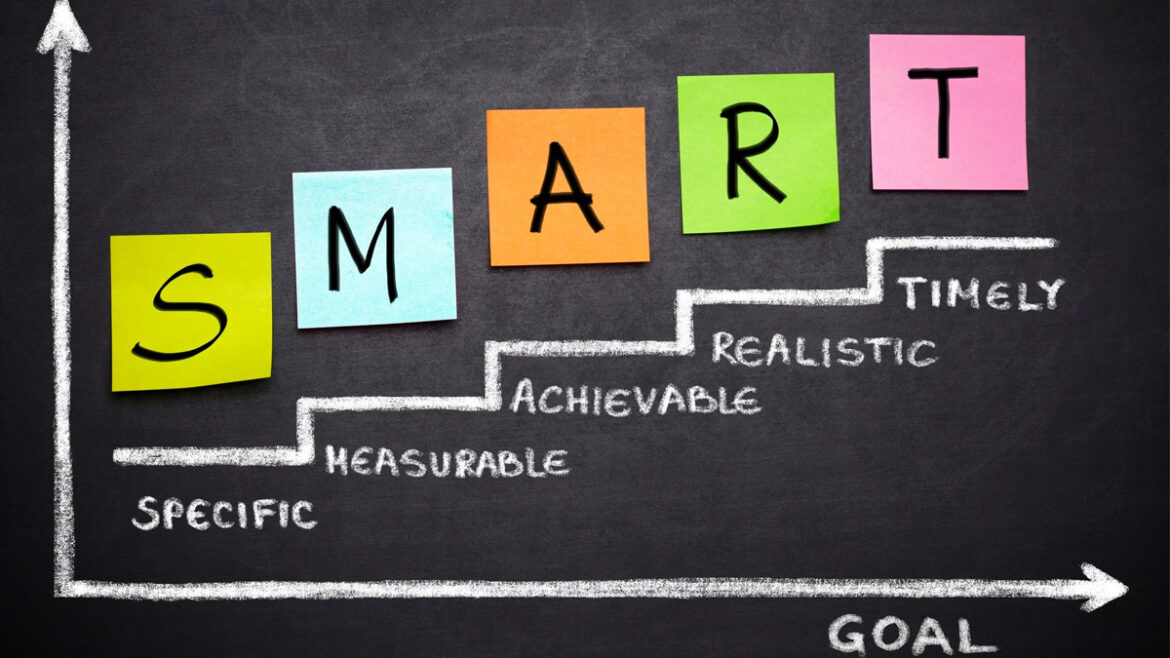Life gets in the way, and we fail to take care of ourselves. Excuses pile up until we can no longer see ahead of them. Somethings else is always vying for our attention. Developing SMART healthy habits that positively affect the body, mind, and soul are the basics of setting wellness goals. Instead of narrow focus points such as weight loss or dieting, people are developing plans to improve their whole-body wellbeing.
That is where SMART goals come in and are essential to leading a healthy lifestyle. They are a solid game plan for meeting our desired results.
SMART?
The term was first proposed in 1981, by George T. Doran introduced SMART goals in his paper, “There’s a SMART Way to Write Management’s Goals and Objectives.” The SMART criteria aimed to boost the chances of achieving goals. Goals that follow the SMART criteria can help you determine exactly what you want to accomplish. When your goals are more focused, you are more likely to achieve success efficiently.
What does SMART mean?
SMART is an acronym that stands for: Specific – Measurable – Attainable – Relevant – Time-Based. SMART is a practical goal-setting framework utilized to assist people in creating specific and achievable goals. In order to increase your likelihood of success, SMART goals are your best friend.
Specific
The goal should be easy to understand and significant to your life. This is where the 5 W’s come in handy: who, what, when, where, why. Answering each question will help you develop specific goals that inspire you to change for good. You’ll be on the right path to greatness.
Measurable
Having smaller milestones to track progress is instrumental in reaching your desired results. Why? You’ll actually be motivated to push on instead of losing fuel amid the journey. For example, 30 minutes every day is a specific amount of time that can be easily measured.
Attainable
Let’s face it: Setting unrealistic goals is a disaster in the making. The goal must be achievable and only requires a small time commitment.
Relevant
You should make sure your goals are related to your long-term aspirations. Ask yourself, does this goal align with my core goals?
Time-Based
Each one of your goals must have a timeline to keep you accountable. Without the time-bound aspect of SMART, there would be close to zero sense of urgency. As time goes on, you might even forget your goal altogether.
SMART Goals for Health and Wellness
Wellness comes in several forms, and we might want/need to set goals to address each. Let’s take a look at different aspects of our daily lives that may benefit from goal-setting and some sample goals.
Physical –
- Schedule 30 minutes of exercise at least five days per week.
- Every time it is realistic, take the stairs rather than use an elevator or escalator.
Mental/Emotional
- When you are talking to people, listen before you react. To listen well, take a breath before you speak.
- Give 15 minutes each day to sit silently and center my attention on my breath.
Financial
- I want to save $1000 by the end of the year so I will save $40 each paycheck.
- I want to spend $500 on Christmas gifts this year so I will save $10 per week.
Nutritional
- Eat at least one cup of leafy greens during one meal every day.
- Cut back on carbs by only eating 25 net carbs per day for one month.
Personal
- Sleep at least seven hours per night for five nights per week.
- Improve cognitive function by doing one crossword puzzle each day.
- Tidying up your workspace before you leave at the end of the day.
Social
- Join a book club and go each month.
- Go out for lunch with someone at work at least once per week.
Here is a great example sample of a complete SMART goal:
GOAL: Face Your Emotions:
I hope to allow myself to experience all of my positive and negative emotions for two weeks. I’ll do this by journaling for 5 minutes each day about how I’m feeling.
- Specific: You will write in a journal for 5 minutes every day.
- Measurable: Track your journal entries to see if you’re writing daily.
- Attainable: 5 minutes is a short amount of time you can easily find in your day.
- Relevant: This is relevant to health and wellness because it allows you to process your emotions healthily.
- Time-based: You should do this every day for two whole weeks.
Ready to start help yourself or your team plan their goals, check out our offerings here. Goomi Group empowers organizations with innovative wellness experiences to enhance and support employees globally. We do this by providing services in the 6 pillars of health mentioned above. View our catalog here.













